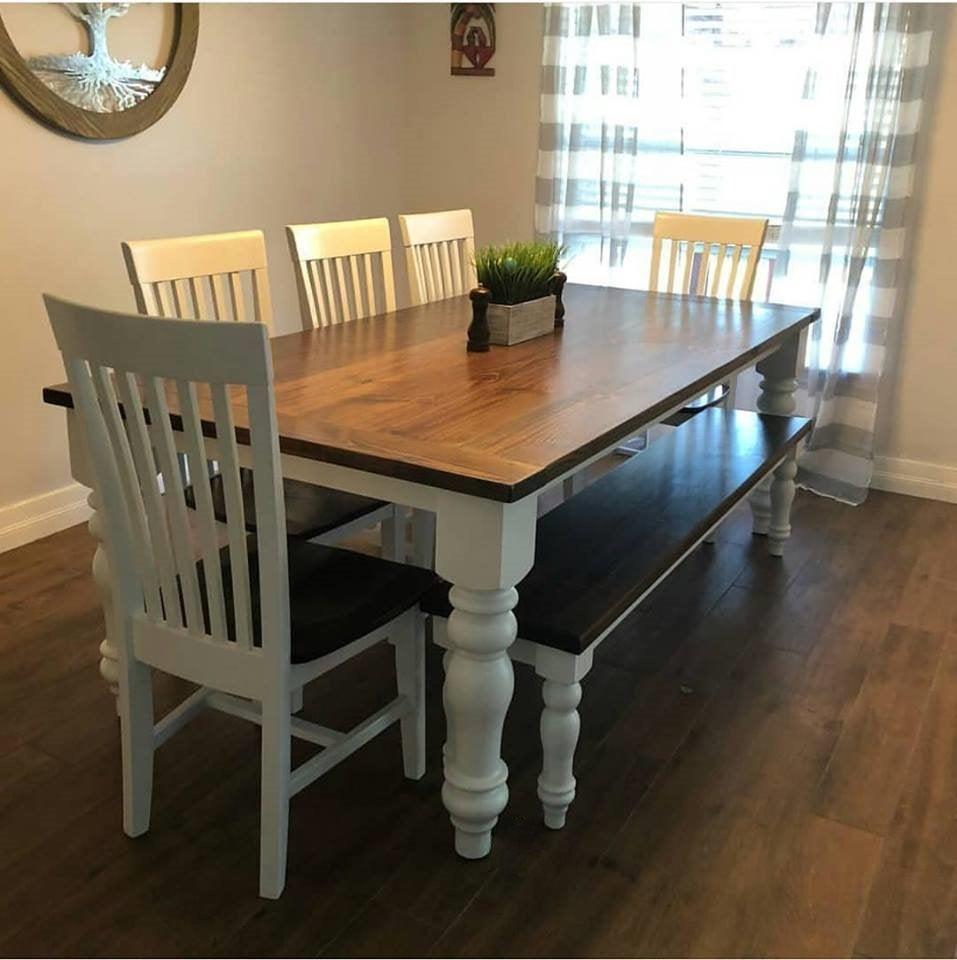Dining Room Table Legs That Incorporate Functionality and Modern Layout
Dining Room Table Legs That Incorporate Functionality and Modern Layout
Blog Article
A Thorough Take A Look At Eating Table Leg Styles: Locating the Suitable Match
Selecting the appropriate eating table leg style is critical for both aesthetic appeal and functional performance. Standard four legs offer timeless elegance and security, while the stand base gives raised legroom and a modern appearance. For those with bigger tables, trestle legs ensure tough assistance, whereas barrette legs introduce a mid-century modern vibe with their minimal style. The x-shaped legs mix contemporary design with enhanced security. Each of these alternatives brings special benefits, making the selection more than just an issue of choice. Check out additionally to uncover which style completely enhances your dining space and way of living.
Traditional 4 Legs
Among the numerous sorts of eating table leg styles, the typical four-leg layout continues to be a timeless choice for many families. This classic setup uses a harmonious mix of functionality and aesthetic appeals, making it a perennial fave. 4 legs give balanced assistance, guaranteeing the table remains steady and qualified of birthing significant weight. This is especially beneficial for houses that often organize huge gatherings or utilize their dining table for numerous functions, such as job or crafting.
From a visual viewpoint, the conventional four-leg layout can be easily adapted to various interior designs. Whether crafted from wood, metal, or a combination of materials, these legs can be intricately carved, streamlined and minimalistic, or anything in between. Their adaptability enables them to complement both rustic and contemporary setups effortlessly.
Moreover, the straightforward framework of the four-leg design helps with simplicity of activity and positioning within a space. Unlike even more complex bases, this style minimizes obstructions, supplying adequate legroom for restaurants. In recap, the typical four-leg dining table leg design weds withstanding beauty with functional capability, making it an astute choice for those looking for both type and function in their dining furnishings.
Stand Base
Often commemorated for its classy and space-efficient style, the stand base is a prominent choice to the conventional four-leg arrangement in eating table leg designs. Without edge legs, restaurants are managed better freedom of activity, making it an optimal choice for round and oval tables that promote even more intimate and comprehensive celebrations.
Moreover, the pedestal base's central support can take care of considerable weight, enabling for making use of larger table tops, such as marble or thick wood. This toughness coupled with its visual flexibility makes the stand base a preferred choice in both traditional and contemporary interior setups. It can perfectly incorporate with different design themes, from classic beauty to minimal modernity. The main column itself offers a canvas for elaborate layouts and imaginative expressions, including an element of aesthetic rate of interest under the table. In summary, the pedestal base combines performance snappy, making it a fine-tuned and useful option for varied eating environments.
Trestle Legs
Trestle legs offer a durable and timeless structure for eating tables, defined by their straight cross-bracing and tough assistance beams. Originating from middle ages times, this layout has actually evolved yet retained its necessary framework, making it a seasonal favorite in both typical and contemporary setups. The central trestle light beam, commonly supported by 2 or even more upright blog posts, provides extraordinary stability, enabling for larger table lengths without the original source the requirement for added legs.
A substantial advantage of trestle leg tables is the adequate legroom they provide. Unlike tables with 4 corner legs, the lack of obstructions at the table's edges supplies unobstructed space for chairs and diners, enhancing convenience and ease of access. This makes trestle tables optimal for suiting bigger celebrations, whether in a dining-room or a reception hall.
The visual adaptability of trestle legs is noteworthy. Readily available in a range of products such as wood, metal, and composite, they can be ended up to complement a wide variety of indoor designs. From rustic farmhouse to streamlined modern layouts, trestle legs can be personalized to suit private preferences. Their enduring charm and practical advantages make trestle legs a compelling option for those looking for both design and functionality in their table.
Barrette Legs

The charm of barrette legs depends on their simpleness and versatility - dining room table legs. Available in a variety of products, consisting of steel and brass, they can be ended up in various shades to complement different indoor designs. Whether coupled with a rustic wood tabletop or a modern glass surface area, barrette legs easily blend functionality with a touch of More Bonuses classic appeal
Toughness is an additional notable function of barrette legs. In spite of their delicate appearance, these legs are crafted to birth significant weight, making sure the dining table remains stable and protected. Furthermore, they are reasonably simple to install, making them a preferred selection for do it yourself enthusiasts and specialist furnishings makers alike.
X-Shaped Legs

Constructed from products such as steel, wood, or a combination of both, X-shaped legs can be customized to match numerous layout preferences. Steel legs usually provide a smooth and commercial feel, perfect for loft-style homes and modern dining rooms.
Additionally, the design behind X-shaped legs guarantees even weight circulation, decreasing the danger of tottering and improving durability. This makes them specifically fit for bigger table that call for additional assistance. In significance, X-shaped legs blend functional design with contemporary aesthetics, making them a classic selection for diverse dining environments.
Conclusion
A comprehensive understanding of table leg designs discloses the distinct attributes and advantages of each style. Standard four legs check this site out supply stability and timeless appeal, while pedestal bases give legroom and a structured appearance. Trestle legs make certain durable assistance for bigger tables, and barrette legs present a mid-century modern aesthetic. X-shaped legs combine modern design with improved stability. Selecting the appropriate leg style ensures both useful and aesthetic contentment in any type of dining room.
Report this page